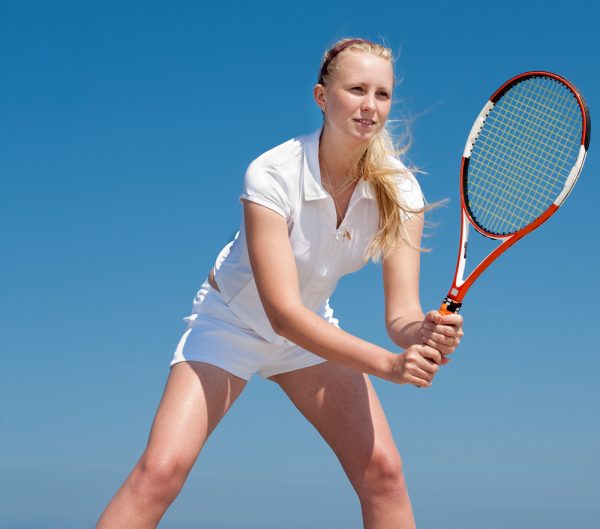Tips to prevent Tennis injuries
Maybe a few of you have decided to pick up your tennis racquet after the excitement of Wimbledon. I just thought I would give you a few tips on how to prevent tennis injuries.
Be prepared for your sport. You could have an excellent serve and great backhand, but if you are not wearing the right footwear you are giving yourself a disadvantage. Tennis shoes are designed with extra lateral support to endure the quick changes in movement and sudden stops and starts; this helps prevent ankle sprains. Running shoes should not be worn as they are made for forwards motion and are not designed to put up with rapid lateral movements, so will therefore not support your feet enough when you are playing tennis. Tennis shoes are made from heavier and stiffer materials. Another vital piece of equipment is of course your tennis racquet. It is very important you have the correct grip size, string tension and weight of racquet, as all of these factors if correct will minimise how much stress is put through the wrist, elbow and shoulder.
(1) Always take time to warm up and stretch. Research has exposed that cold muscles are more prone to injury. Start with a nice gentle jog to get the blood pumping and to warm the muscles. Once you feel warm, do some static and/or dynamic stretching. Finish off with some plyometric work (jump training), such as jumping jack, side steps, hops etc.… Next proceed to hitting tennis balls and gradually build up to hitting with longer swings.
(2) Sports specific conditioning. Each athlete should be conditioned specifically for the sport they will be playing. Tennis involves many aspects of performance, including strength, speed, power, coordination, flexibility, agility and endurance. All of these things need to be taken into account when putting together your training plan. Specifically strength training in/around the shoulders can help improve power, but more importantly may limit the risk of shoulder injury. Speed and agility training is also very important as it is good foot work that allows the player to get into the appropriate/proper set up position to hit the ball and recover for the return shot.
(3) Focus on technique. Be careful not to bend backwards/over extend when serving the ball as this can compress the joints in your lower back. Instead bend your knees and raise your heels in order to balance your weight better. Although you need to be on your toes and quick on you feet for tennis, you should try and avoid repeating landing on the ball of your foot, as this could lead to Achilles injuries.
(4) Listen to your body; you only have one, so take care of it! If you have pain, then stop playing, take a rest or take some time out. You can apply ice to a painful area for 10-15 minutes.
(5) Warm down. Stretching and low intensity exercise (such as jogging), all help to prevent soreness or stiffness and to speed up the recovery process.
Common tennis injuries include:
- Tennis elbow (lateral epicondylitis)
- Wrists sprains (possibly tendonitis)
- Shoulder injuries
- Ankle sprains
- Low back pain
- Muscle strains (e.g. calf or hamstring)
If you are suffering from any of the above injuries whether they are tennis related or not, why not contact us at Avenue clinic so we can take care of it.
References:
http://orthoinfo.aaos.org/topic.cfm?topic=A00186
http://www.tennisexpress.com/info/buying-the-right-tennis-shoes.cfm
http://hss.edu/onthemove/injury-prevention-tips-for-tennis-players/#.VaT2u1b5HWg



